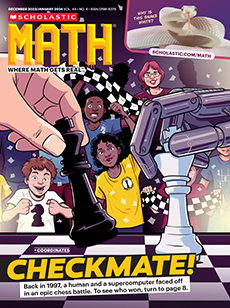Would you want a mechanical helper who could clean your room or kick a soccer ball around? It might sound like science fiction, but Dennis Hong builds robots that can do all that and more. Hong’s fascination with robots began at age 7, when his parents took him to see Star Wars. “I was completely mesmerized by the droids in the movie,” Hong says.
Today Hong is an engineer at the University of California, Los Angeles. He leads the Robotics & Mechanisms Laboratory, or RoMeLa. In the lab, he and his team of engineering students design robots to tackle tasks from disaster relief to dinner prep. “Our goal is to make intelligent machines that do work people cannot or don’t want to do,” says Hong.
Would you want a robot to clean your room? How about to kick a soccer ball with you? It might sound like science fiction. But Dennis Hong builds machines that can do those things and more. Hong first became interested in robots at age 7. That’s when his parents took him to see Star Wars. “I was completely mesmerized by the droids in the movie,” he says.
Today Hong is an engineer at the University of California, Los Angeles. He and his students design robots in their laboratory. Their creations tackle jobs from disaster relief to dinner prep. “Our goal is to make intelligent machines that do work people cannot or don’t want to do,” says Hong.
